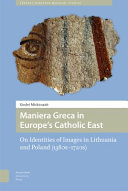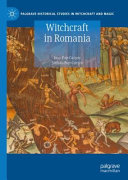Maniera Greca in Europe's Catholic East
How and why does vernacular art become foreign? What does 'Greek manner' mean in regions far beyond the Mediterranean? What stories do images need? How do narratives shape pictures? The study addresses these questions in Byzantine paintings from the former Grand Duchy of Lithuania, contextualized with evidence from Poland, Serbia, Russia, and Italy. The research follows developments in artistic practices and the reception of these images, as well as distinguishing between the Greek manner - based on visual qualities - and the style favoured by the devout, sustained by cults and altered through stories. Following the reception of Byzantine and pseudo-Byzantine art in Lithuania and Poland from the late fourteenth through the early eighteenth centuries, Maniera Greca in Europe's Catholic East argues that tradition is repetitive order achieved through reduction and oblivion, and concludes that the sole persistent understanding of the Greek image has been stereotyped as the icon of the Mother of God.
Looking for a high-quality, original digital edition of
Maniera Greca in Europe's Catholic East
? This official electronic version is published by
Amsterdam University Press
and offers a seamless reading experience, perfect for professionals, students, and enthusiasts in
Game.
Unlike EPUB files, this is the authentic digital edition with complete formatting, images, and original content as intended by the author .
Enjoy the convenience of digital reading without compromising on quality. Order Maniera Greca in Europe's Catholic East today and get instant access to this essential book!












0 Comments